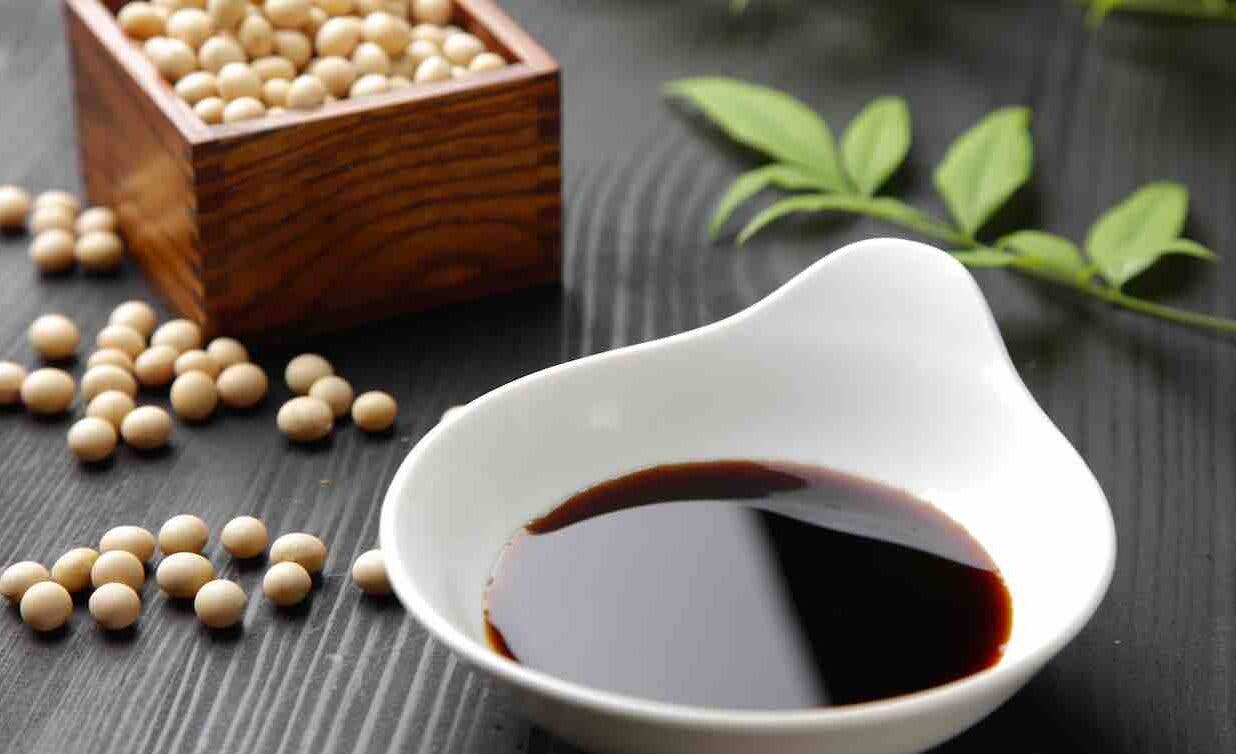
Soy Sauce, Tamari, Liquid Aminos: What’s the Difference?
Soy sauce plays so many roles in the kitchen: The Asian seasoning is a must in stir-fries and sushi dipping sauces, of course, but it also makes its way into salad dressings, pasta dishes, roasted vegetable marinades—basically in any dish where its salty, savory goodness will give the flavors a little boost. All the more reason to know more about the all-purpose seasoning elixir, from how soy sauce is made and the different types to choose from to how best to select, store, and use it in a whole-food, plant-based kitchen. Plus, we’ll break down common soy-sauce alternatives, including tamari, liquid aminos, and coconut aminos.
What Is Soy Sauce?
Soy sauce is a salty, savory, dark brown liquid that is used as both a seasoning in recipes or a condiment for finished dishes. It is made by fermenting cooked soybeans in a saltwater brine for anywhere from several days (many mass-market soy sauces) to several years (artisanal soy sauces). Usually, wheat or other grains are added to enhance the fermentation process and help mellow the flavors of the final product.
The fermenting process is what makes soy sauce special. As the proteins in the soybeans break down, fragrant, robust, yeasty flavor compounds are released along with glutamates, naturally occurring compounds that impart umami and heighten foods’ flavors.
A Brief History of Soy Sauce
Soy sauce has been around for thousands of years. It hails from China, where the technique of fermenting soybeans in brine dates back to the third century B.C. From China, soy sauce spread to Japan, Korea, Indonesia, and throughout Asia. By the 17th century, soy sauce had made its way to Europe from Japan and could be found as a seasoning on the table of Louis XIV at Versailles. And by the 18th and 19th centuries, British food manufacturers and cooks were using Japanese soy sauce to flavor their non-Asian recipes, much as home cooks do today.
Japanese-style soy sauce, made with soybeans, wheat, and salt, remains the most widely available in the world.
Soy Sauce, Shoyu, Tamari—What’s the Difference?
Cruise the soy sauce section of any well-stocked supermarket and you will come across bottles labeled with these three different names. Here’s what they mean.
Soy Sauce
Soy sauce is the general term for any type of soy sauce, regardless of where it is made or what type it is. (More on the different types below.)
Shoyu
“Shoyu” is the Japanese word for soy sauce and is sometimes used on labels for Japanese-style soy sauces made with soybeans, wheat, salt, and water.
Tamari
Originally the liquid byproduct of the production of miso (fermented soybean paste), tamari sauce has a rich, robust flavor and a mellower taste than soy sauce/shoyu. Because it is made solely with soybeans, tamari is generally considered to be gluten-free, but if gluten is an issue, you should choose a brand that states it is gluten-free on the bottle.
Low-Sodium Soy Sauce
Low-sodium, reduced-sodium, or less-salt soy sauce is made in the same way as regular soy sauce, but 40% of the salt is removed from the liquid after the fermentation period. It still has all of the full-bodied flavor of regular soy sauce, as well as plenty of salt (which is why we recommend using it sparingly).
Don’t have low-sodium soy sauce in your cupboard? Stir 1 tsp. water into 2 tsp. regular soy sauce for 1 Tbsp. of seasoning that has a similar lowered sodium content.
Is Soy Sauce Gluten-Free?
Soy sauce usually contains wheat. Tamari, which is made solely with soybeans, is generally considered gluten-free, but to be safe, gluten-free eaters should opt for tamari that include a “gluten-free” label on the bottle.
How Long Does Soy Sauce Last?
Most soy sauces have a shelf life of two to three years, though they may lose some of their pungency over time. Store bottles in a cool area away from direct light. To maintain optimal flavor for longer, refrigerate soy sauce after opening.
What About Bragg Liquid Aminos?
While not soy sauce, Bragg Liquid Aminos is a sauce that’s made with soy. Rather than fermented soybeans, Bragg’s patented process uses soy protein to produce a lighter-hued, thinner condiment that can be used interchangeably with “true” soy sauce. Fans love it because it is certified kosher, non-GMO, and gluten-free. Because liquid aminos have not been fermented, the bottle should be refrigerated after opening. One thing to note is that Bragg Liquid Aminos contains as much sodium as regular soy sauce and so should be used sparingly.
Coconut Aminos: the Low-Sodium Soy-Free Soy Sauce Alternative
Made by fermenting coconut palm sugar and salt, coconut aminos are milder and sweeter than soy sauce and much lower in sodium. They make an excellent alternative to soy sauce for people who are sensitive to gluten and soy.
Quick Guide to Soy Sauce Types
If you like to cook Asian recipes, you may have come across recipes that call for Chinese, Korean, Indonesian, dark, or all-purpose soy sauce. Here’s a brief explanation of each.
Japanese
Japanese soy sauce is the type that you’re probably most familiar with. It has a salty, tangy, slightly sweet flavor and can be used in both cooked recipes like stir-fries and raw recipes such as salad dressings and dipping sauces. Some recipes refer to it as “all-purpose” soy sauce.
Korean Soy Sauce
Lighter in color and extremely salty, Korean soy sauce is generally used only in cooking, not as a condiment.
Indonesian Soy Sauce
Also called kecap manis or sweet soy sauce, Indonesian soy sauce has a caramelized flavor that comes from the addition of molasses or palm sugar. For a quick substitute, stir together equal parts soy sauce and pure maple syrup and use as directed.
Chinese Soy Sauce
Made primarily with soybeans, Chinese soy sauce has a thicker texture and a saltier flavor than Japanese soy sauce.
Dark Soy Sauce
Originating in China, dark soy sauce is viscous and a little sweet; the sweetness can come from longer fermentation times or added sweeteners. It is usually called for specifically in recipes like Chinese noodle dishes, where it coats the noodles and lends them a deep chestnut color.

Free Download
Free 5-day meal plan!
Get a taste for healthy, fuss-free meal planning with this free five-day meal plan from Forks Meal Planner!
By providing your email address, you consent to receive newsletter emails from Forks Over Knives. We value your privacy and will keep your email address safe. You may unsubscribe from our emails at any time.

About the Author

About the Author
Mary Margaret Chappell
Join our mailing list
Get free recipes and the latest info on living a happy, healthy plant-based lifestyle.
By providing your email address, you consent to receive newsletter emails from Forks Over Knives. We value your privacy and will keep your email address safe. You may unsubscribe from our emails at any time.